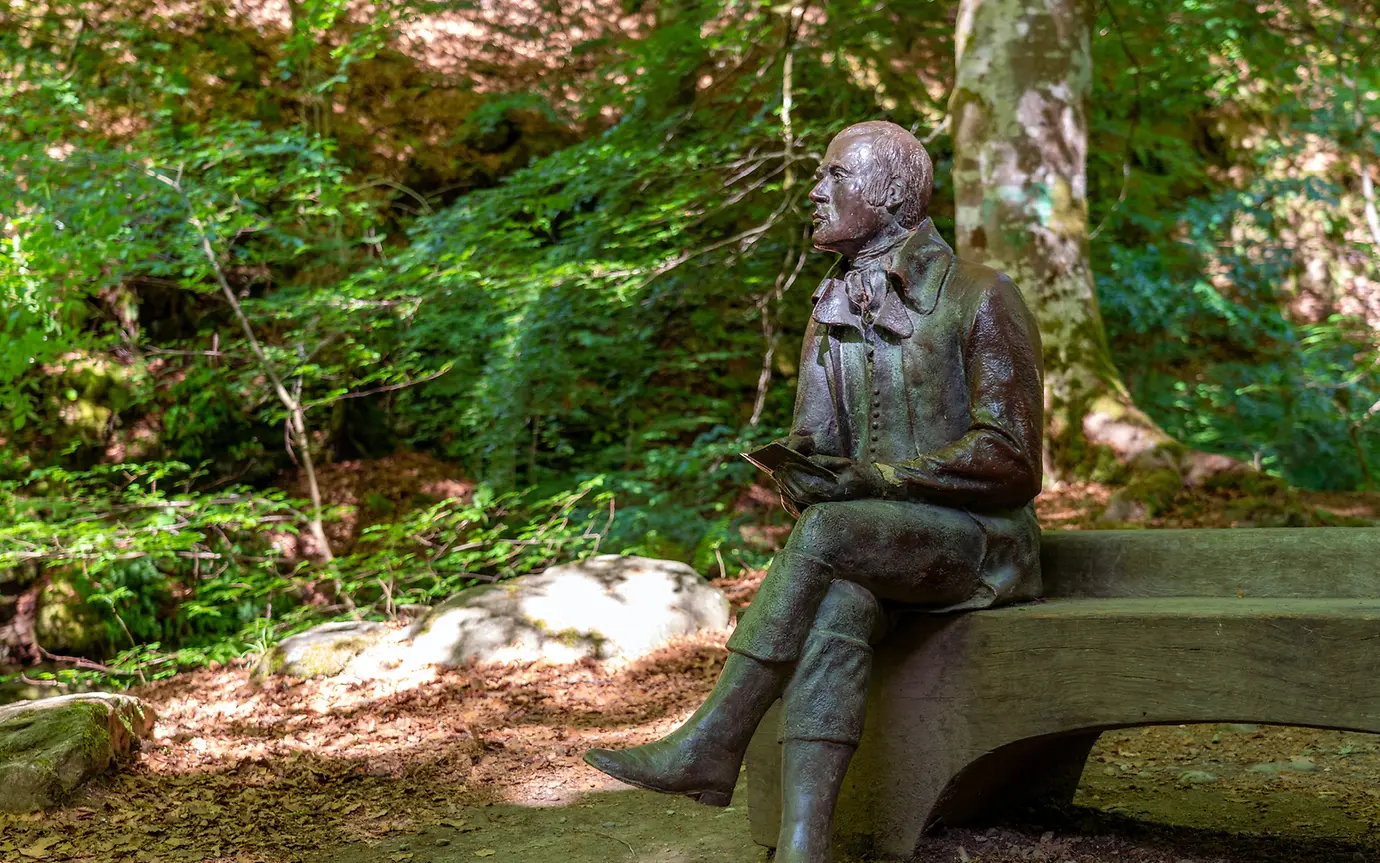This week, Scots and many others across the world gather to celebrate the life and works of Robert Burns. After Christopher Columbus and Queen Victoria, Robert Burns has more statues dedicated to him than any other non-religious figure. But what is it that makes Burns such a celebrated bard?

Born on 25th January 1759 in Alloway, Ayrshire, Burns was the oldest of seven siblings. His family were tenant farmers and not wealthy at all. Burns grew up in poverty and hardship with a poor diet, often just oatmeal and milk, and endured many years of manual labour on the family farm. In due course, this lifestyle would ensure he only reached the age of 37.
He was largely educated at home by his father, William Burnes, who taught his children the basics of reading, writing and arithmetic as well as geography and history. Quite a feat when we consider the challenges of home-schooling during the COVID-19 pandemic...
William Burnes was consistently unfortunate and moving from farm to farm meant that he was never able to improve their financial circumstances. This bad luck followed Robert and his brother, Gilmour, with whom he worked.
Farming in the 18th century was difficult and anything but lucrative, however it was as the principal labourer in 1774 that a young Burns was inspired to write his first poem ‘O, Once I Lov’d A Bonnie Lass’, believed to be Nelly Kilpatrick, who worked with Burns during the harvest that year.
From then on, Burns never looked back and kept writing. Romance would continue to feature heavily in his future writings as well as in his personal life.
The first Burns Supper is believed to have taken place in 1801, where friends of the late poet came together to raise a toast to his influential and entertaining poetry and writing. In his lifetime, Burns is believed to have written over 500 poems and songs, many of which are still celebrated and recited today. ‘Auld Lang Syne’ is recognised by the Guinness Book of World Records as one of the top three most popular songs in the entire English language. In China, it is known as a song of friendship and played at graduations and other formal gatherings - illustrating the global reach of Burns’ work.
A Burns Supper is the annual appreciation and recognition of one of Scotland’s greatest storytellers and it has three key ingredients: food, whisky and poetry.
The centrepiece of any Burns Night is the iconic haggis or, as Burns described it, the ‘great chieftain o’ the puddin-race’. To some, it is an acquired taste, but, having enjoyed them all over the world, I can assure you, it is hearty fare. The haggis is typically piped into the room on a silver salver, the ‘hero of the hour’ if you like. Having paraded around the room, it is set down and a dram of whisky is taken by the piper and haggis carrier, usually the chef.
An invited artiste then makes the address to the haggis, a masterpiece when recited well. Who would have thought you could write such passionate verse about one’s appreciation for food? “Fair fa’ your honest, sonsie face, Great chieftain o’ the puddin’-race! Aboon them a’ ye tak your place, Painch, tripe or thairm; Weel are ye wordy o’ a grace, As lang’s my arm…” There are eight verses of Burns celebrating this simple foodstuff but, in his words, it is still worthy of a proper grace.
A Burns Night would not be complete without the ‘Selkirk Grace’ and a recital of Tam O’Shanter. The latter tells the story of the drunken journey home of Tam, who passes his local haunted church during a storm only to witness a mystical celebration featuring witches, warlocks and the devil playing the bagpipes.
Fundamentally, Robert Burns is remembered because of the themes and language of everyday life that he used, often of love and nature. He employed humour and small subjects to express big ideas, and he could speak to the common people, especially those less fortunate and disenfranchised. Today we come together with friends and family to celebrate his legacy and our cultural heritage, with traditional food and drink.
So, as we mark the first anniversary of LGT Wealth Management officially in Scotland, I hope you will join me in raising a glass to Robert Burns.
Robert Burns (born 25th January 1759, died 21st July 1796).
Photo credit: ABERFELDY, SCOTLAND, UK - JUNE 05, 2018: The statue of Robert Burns at Falls of moness, Birks of Aberfeldy amongst the trees of Moness Dun Wood in the Scottish Highlands, UK.
Read more from Insights.
This communication is provided for information purposes only. The information presented herein provides a general update on market conditions and is not intended and should not be construed as an offer, invitation, solicitation or recommendation to buy or sell any specific investment or participate in any investment (or other) strategy. The subject of the communication is not a regulated investment. Past performance is not an indication of future performance and the value of investments and the income derived from them may fluctuate and you may not receive back the amount you originally invest. Although this document has been prepared on the basis of information we believe to be reliable, LGT Wealth Management UK LLP gives no representation or warranty in relation to the accuracy or completeness of the information presented herein. The information presented herein does not provide sufficient information on which to make an informed investment decision. No liability is accepted whatsoever by LGT Wealth Management UK LLP, employees and associated companies for any direct or consequential loss arising from this document.
LGT Wealth Management UK LLP is authorised and regulated by the Financial Conduct Authority in the United Kingdom.